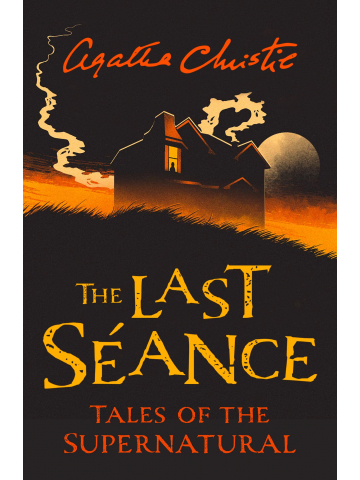Book Review: The Last Séance by Agatha Christie
Agatha Christie is best remembered for her tales of mystery and detection, but she didn’t confine herself to that field. She also wrote stories with elements of the supernatural, and this new volume collects twenty of them in one place, rather than in scattered anthologies.

The title story, “The Last Seance” starts off the collection with a full dip into the horror genre. Simone is a genuine medium, the best in all of Paris. But being the best in your field comes with certain customer expectations. Is grieving mother Madame Exe demanding too much?
The final story is “The Hound of Death”, about a Belgian nun who allegedly wiped out a German patrol (and her convent) by calling lightning from the sky. Years later, a doctor is investigating her because she’s been thought to be mad all this time. There is some knowledge humanity isn’t ready for yet. Or maybe just this doctor isn’t ready.
Only a handful of the stories are full-on supernatural; others are “I had a premonition and it came true”, the best of these is “The Red Signal” which at least mentions the possibility of confirmation bias and the subconscious picking up clues that then present themselves as “bad feelings about this.”
And then there are the “weird menace” stories where spooky stuff goes on, but there’s a rational (if scientifically dubious sometimes) explanation at the end. The three Hercule Poirot and two Miss Marple stories reprinted here are in that category; I liked “The Blue Geranium”, in which wallpaper flowers signify death, the best of these.
New to the United States in this collection is “The Wife of the Kenite” published in an Australian magazine in 1922 and not reprinted in Britain until 2018. A German Communist agent flees the government in South Africa, and finds shelter in a remote farmhouse. A certain Bible story is replayed.
The story I liked best was “The Dressmaker’s Doll”, a tale of a creepy doll no one remembers buying and that seems to move when you’re not looking. It terrorizes a dressmaking firm, up until not quite the twist ending I was expecting.
Content note: suicide in one story. Period ethnic prejudice pops up a few times, most notably in “The Gipsy” which has no actual Roma in it, but uses the fortuneteller stereotype.
Overall: A decent collection; long-time Christie fans will have read the majority of these stories elsewhere, so I think newer fans will get more out of it. I do really like the cover, and this would make a good gift for the right friend or relative.
Speaking of creepy dolls:

